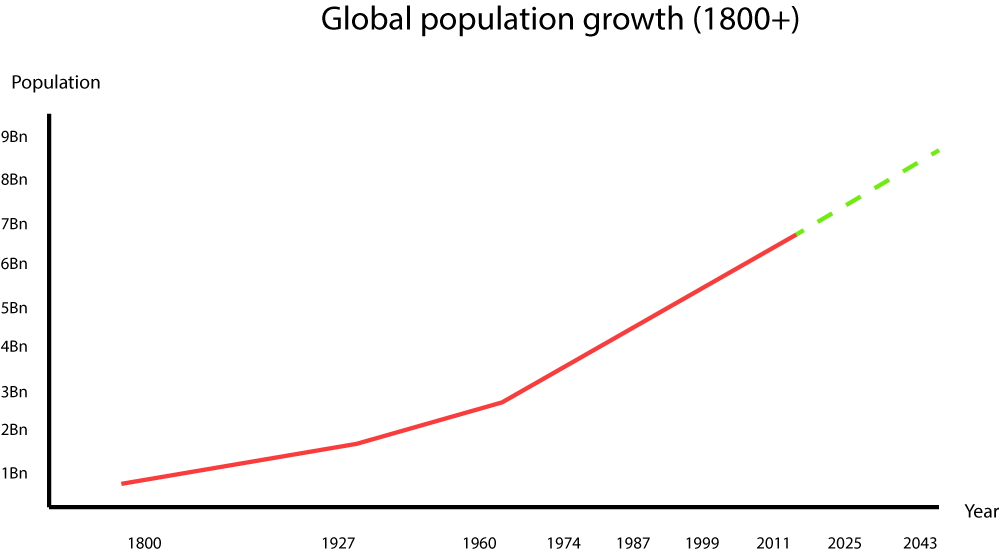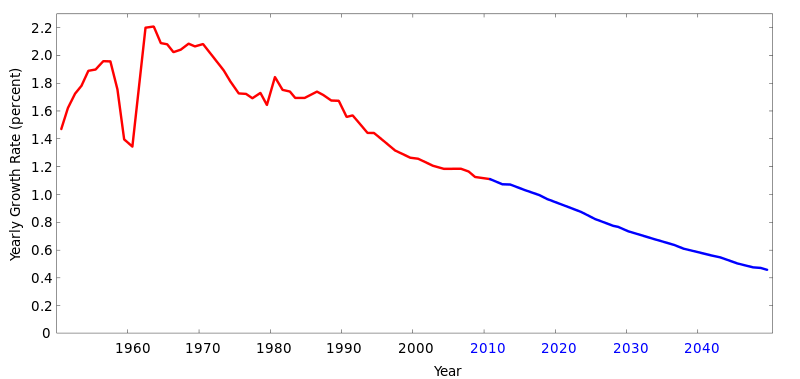Human population growth and sustainability
It might be argued that many of the key environmental problems on the planet today are related to over-population arising from exponential global population growth. By definition, it can be argued that exponential growth curves are not sustainable.
UN Population fund (Click image to enlarge)
One of the most common means to represent how population pressure impacts on the environment is related to the IPAT equation conceived and articulated by Ehrlich and Holdren (1971). The IPAT equation is represented as follows:
- I (Impact) = P (Population) × A (Affluence) × T (Technology)
The equation has largely remained credible and is still the focus of testing and assessment (Kissinger and Karplus 2015; Kerr 2014; Hubacek et al. 2012) in population and related impact studies into the present day.
In the IPAT equation the P, A and T are functions that are dependent on each other. It can also be argued that the function I also influences the functions on the other side of the equation, as a deteriorating and degraded environment will impact on future population possibilities, population affluence and also the types of technology challenges to be in future focus.
There are, however, a number of criticisms of the IPAT equation, as a measure of human pressure on the environment, which need to be recognised. Perhaps the most common is that indicated by Roca (2002) who questions how the level of technology can be effectively measured. Victor (2009) also points out another key criticism of IPAT and that relates to the assumption that the variables on the right of the equation are independent of each other. This is generally not the case. Population growth can affect affluence which in turn can impact on technology adoption.
'World population growth rate 1950–2050' from wikimedia.
Used under a creative commons license
(Click image to enlarge)
Although the annual rate of human population growth is slowing, a graphic live illustration of the phenomenal daily growth still taking place is represented here: World population

